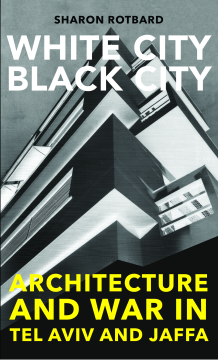
Additional Information
Book Details
Abstract
This is the history of colonialism as seen though the architecture of Israel/Palestine. Tel Aviv is the 'White City', said to have risen from the sands of the desert, acclaimed worldwide for its architectural heritage and gleaming Bauhaus-inspired Modernism.
Jaffa is the 'Black City', the Palestinian city that was largely obliterated to make way for a new European-style architecture at the heart of a newly-formed Israel.
Both a gripping narrative and a unique architectural record, this book shows how any city in the world is made not only of stones and concrete but also of stories and histories - victors and losers, predator and prey. In this way, the legend of the Black City and the White City, architecture and war, is our story too.
'Fascinating'
Edwin Heathcote, Financial Times
'A path-breaking and brilliant analysis that combines architecture, urban design, military strategy and general culture into an exhilarating war of streets and homes.'
Eyal Weizman, author of Hollow Land: Israel's Architecture of Occupation (Verso, 2012)
'This tale of Tel Aviv's growth from a Jaffa suburb to a metropolis is gripping'
The Economist
'White City, Black City is not a book about architecture. It is a political text written in a beautiful clear language.'
Time Out
'A superbly researched and exemplary architectural study ... If you want an explanation of the roots of the Israel-Palestine conflict - and of just how deep they go, right into the very foundations of the buildings - this book gives one of the most unusual and convincing accounts'
Owen Hatherley, the Guardian
'Rotbard's narrative contains fascinating insights'
Haaretz
'An important and fascinating exposé through architecture, geography and history. A sad but revealing history of how myths are forged and histories corrupted'
Raja Shehadeh, author of Palestinian Walks: Notes on a Vanishing Landscape (Profile Books, 2008) and winner of the Orwell Prize for Literature
'A fundamental, fascinating and clever book on architecture in the service of politics'
Adam Baruch, Maariv
'White City, Black City is a detailed and useful corrective to the mainstream Zionist narrative about the founding of Tel Aviv'
Times Literary Supplement
'A challenging book that deserves to be read and argued over. Rotbard here slaughters an especially sacred cow: Tel Avivness'
Tom Segev, Haaretz
Table of Contents
| Section Title | Page | Action | Price |
|---|---|---|---|
| Cover | Cover | ||
| Contents | ix | ||
| Part I: White City | 1 | ||
| Book of Paper, Book of Stone | 3 | ||
| Writers and Builders | 5 | ||
| The 'White City' Exhibition | 6 | ||
| The Invention of Normality | 8 | ||
| Conservation | 9 | ||
| Whitened City | 11 | ||
| White Lies | 16 | ||
| Round Corners | 24 | ||
| Good Old Eretz Israel | 33 | ||
| Whiter than White City | 38 | ||
| Built on Dunes | 43 | ||
| Part II: Black City | 55 | ||
| The Black Patch | 63 | ||
| War | 66 | ||
| Fleeing Jaffa | 69 | ||
| Bypassing Manshieh | 72 | ||
| Spatial Contradiction | 79 | ||
| 'Those Polish of the Orient' | 81 | ||
| Separation | 88 | ||
| British 1930s | 91 | ||
| Urbicide | 98 | ||
| Cleansing | 107 | ||
| Jaffa - Tel Aviv | 108 | ||
| An Occupied City | 110 | ||
| Hebraized City | 112 | ||
| The Big Zone | 115 | ||
| Antique Jaffa | 120 | ||
| Green Dunes | 124 | ||
| Raping the Bride of the Sea | 128 | ||
| The Orange Route | 134 | ||
| The Children of Jaffa | 139 | ||
| The Menorah | 141 | ||
| Part III: White City, Black City and a Rainbow | 157 | ||
| Uncritical Modernists | 161 | ||
| Blue and White | 174 | ||
| Multicultural City | 176 | ||
| Afterword | 183 | ||
| Acknowledgements | 190 | ||
| Notes | 193 | ||
| Bibliography | 221 | ||
| Index | 229 |
